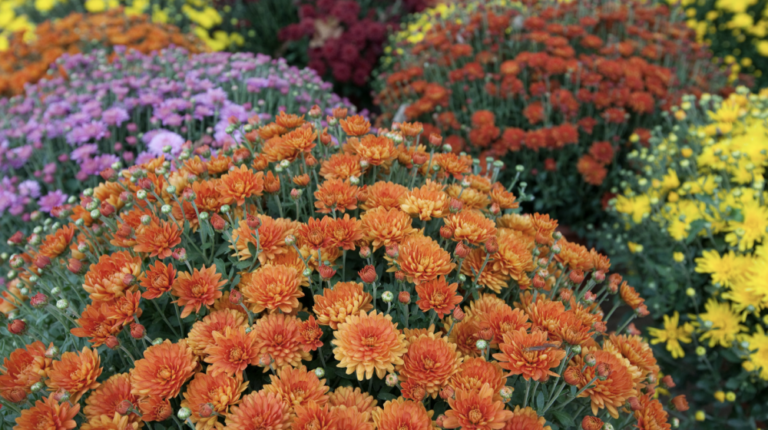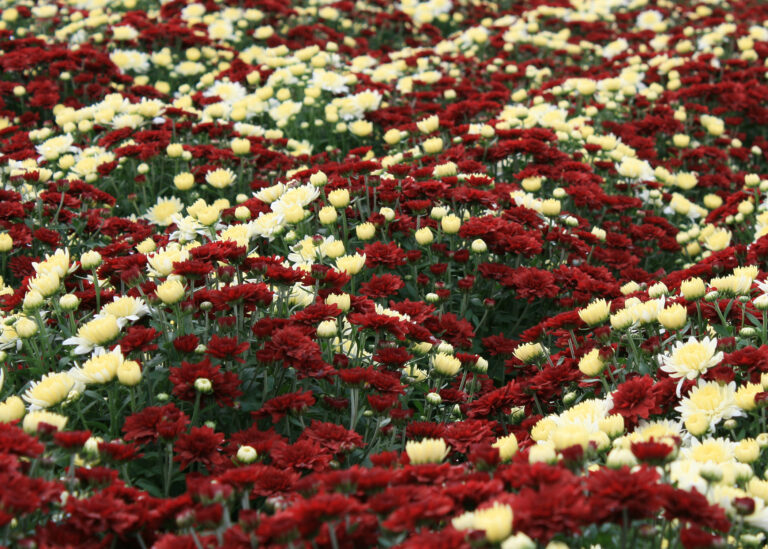

This spring, I picked up a packet of Mexican Sunflower (Tithionia Rotundifolia) seeds. I’m slowly creating a perennial garden, and while I accumulate plants, I like to supplement by tossing some annual seeds into the bed to fill in the empty areas where my future perennials will be planted. This little packet of seeds has created quite a statement in my garden.
Initially, I thought this was a weed as flowers didn’t appear until well into August. I scanned the leaves using a plant identification app, this saved her from the trash bin. That seven-foot plant in the middle of my flower bed is a Mexican sunflower. I can cut flowers from this beast every day, and she just keeps producing more. Ideally, I would have planted the seeds in the back of the bed, but guess who didn’t read the plant characteristics on the seed packet!
Because of its height, rangy habit, and coarse texture, this annual is best at the back of borders and beds to form a backdrop for shorter plants. In my garden, a fence is used to support the stems and create a screen. Use in mixed or annual borders with tall zinnias, coreopsis, and other flowers in hot colors for a high-energy planting, or tone down the brilliant orange-red flowers by combining with purple flowers and larger plants with dark-colored foliage.
Tithonia grows best in full sun in poor to average, well-drained soil. Avoid planting in rich soil or heavy fertilization, which will promote excess foliage and weak stems. After they are established, Mexican sunflowers don’t require fertilization. Pinch back plants to encourage bushier growth. Sturdier plants are less likely to fall over but plants often need to be staked to remain upright. Mexican sunflower grows as an annual in USDA zones 2-11 and can’t be overwintered. It can survive temperatures as low as 30° F for a brief period but will incur some damage. Shelter from strong winds if possible. It has few pest issues and is not favored by deer. You might see garden slugs if your garden receives a lot of rain. If the sunflowers are crowded and the humidity is high, watch for powdery mildew. Plant a few Mexican sunflowers near your vegetable garden to entice pollinators and beneficial bugs, which can help control potential outbreaks of pests.
When choosing your seed packet, look for T. rotundifolia not T. diversifolia. Tithionia diversifolia is a perennial and can become invasive if we were to have a series of mild winters or if planted further south. Grow tithonia from seed, either planted directly in the garden at the last frost date or started indoors 6 to 8 weeks before the average last date of frost for earlier blooms. Sow shallowly as light is required for germination. Plant in the garden about two feet apart to provide support for adjacent plants, or place staked plants 3 to 4 feet apart. Since the plant is tall with brittle stems, try to provide shelter from strong winds, but even in areas that are not windy these plants benefit from staking. It needs warm sunny weather to grow well so may not do much early in the season.
When growing Mexican sunflower plants, plan on deadheading the flowers to encourage late-summer blooms. In tropical climates, deadheading helps prevent potentially vigorous reseeding. The plant may self-seed in your garden leading to future crops, but is not considered invasive in zone seven as it is an annual. Mexican sunflowers grow easily from seed, and harvesting seed from an existing plant is simple. Deadhead a spent bloom, pop it into a paper bag, and set it in a warm indoor area to dry. The petals will fall off, leaving only the seed head. Pick up the seed head and rub it between your fingers over a plate or paper towel to cause the seeds to fall out. Store them in a dry area until the weather warms in spring; then, toss them across a garden bed without covering them and water the bed.
Planting Mexican sunflowers in containers isn’t recommended because they grow so large so quickly. If you want to try it, buy a dwarf cultivar, such as ‘Fiesta Del Sol,’ and plant only one or two seeds in an 18-inch or larger terra-cotta container with good drainage. These are annual plants, so repotting isn’t needed. Just replant seed each year.
Only a few cultivars are generally available:
‘Fiesta del Sol’ – is a shorter cultivar that only grows about 3 feet tall. It was an AAS award winner in 2000.
‘Goldfinger’ – is a short variety (2-2.5 feet tall) better suited to small gardens with orange-gold flowers.
‘Torch’ – is the most commonly offered cultivar, winning an AAS award in 1951.
‘Yellow Torch’ – has apricot yellow-orange flowers.
These flowers provide excellent nutrients to the garden soil. Cut them down, chop up the stalks, and add them to your compost bin. I’ll share some pictures of next year’s Mexican Sunflowers when I finally get them into a better location! In the meantime, I’ll enjoy their proliferous flowers.




